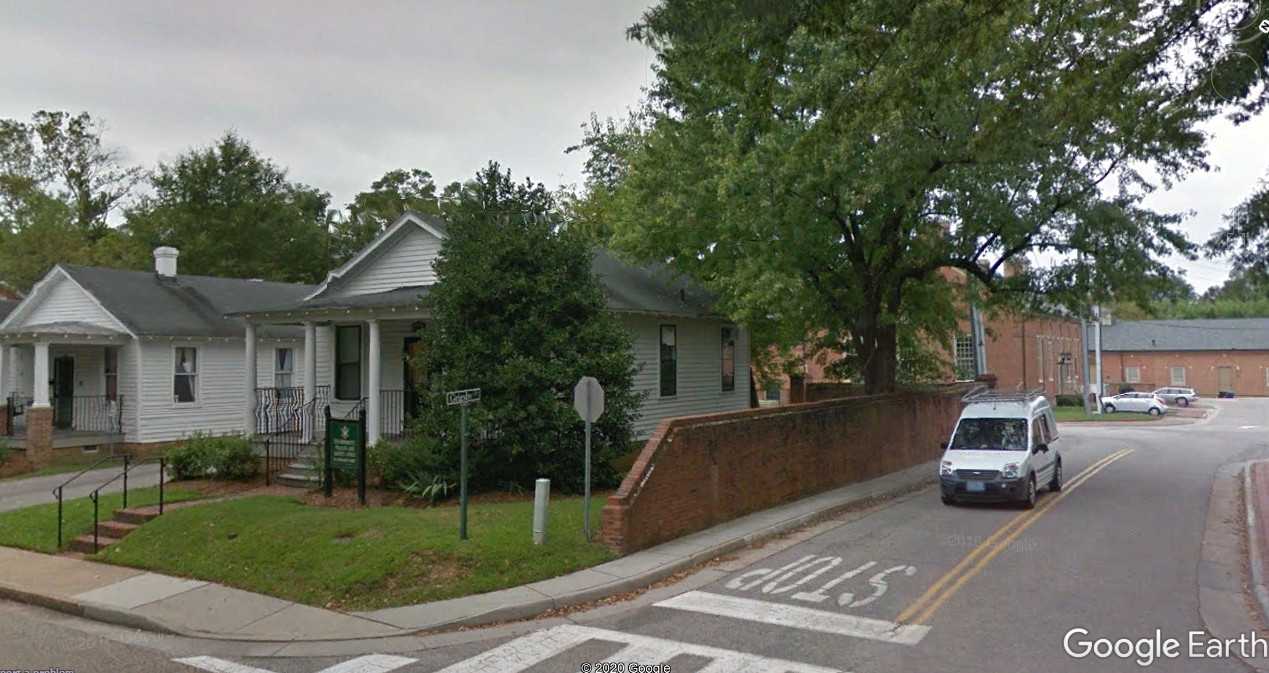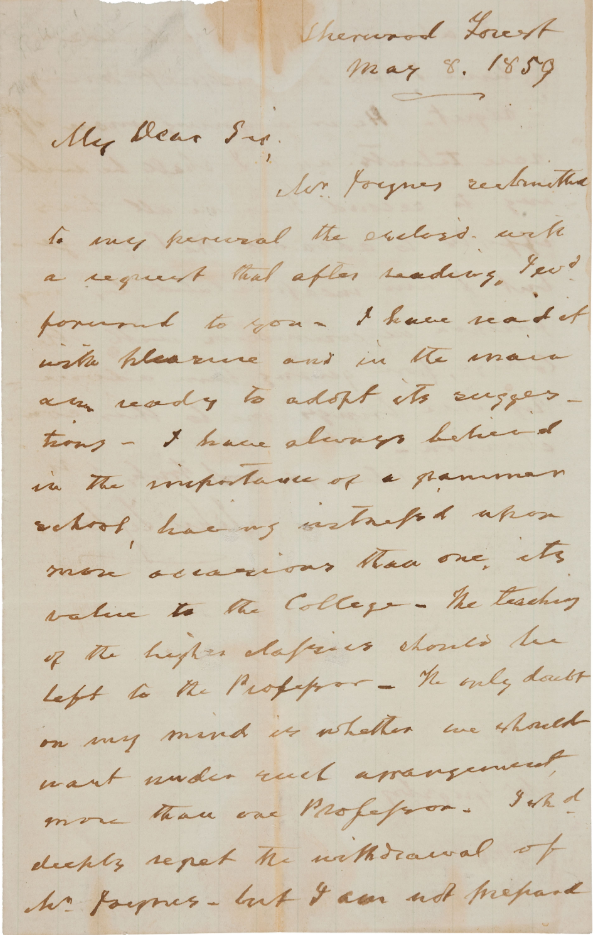Kelvin Ramsey ‘79, W&M Libraries supporter and originator of the Ramsey Collection of Lantern Slides and Stereoviews, shares the history behind a name you may pass by regularly. Read on to learn more about Hugh Blair Grigsby, Chancellor of William & Mary and avid collector and historian.
Much like a courtyard or house described by Charles Dickens in A Christmas Carol or Dombey and Son that played a game of hide-and-seek and was forgotten, Grigsby Drive lies off South Boundary Street. It is well-travelled as it leads past the power plant to the parking lot behind Trinkle Hall, but I suspect a poll of those who regularly pass to the parking lot would be doing some head scratching to remember the name.
 Entrance of Grigsby Drive off of South Boundary Street. Image courtesy of Google Earth.
Entrance of Grigsby Drive off of South Boundary Street. Image courtesy of Google Earth.Grigsby calls to mind Hugh Blair Grigsby, born in Norfolk, Virginia on November 22, 1806. As a child, he had memories of the British bombardment of Norfolk in the war of 1812. He fell in love with Mary Venable Carrington, of Charlotte County, Virginia, the daughter of Clement Carrington, probably the wealthiest man in the County at the time. Hugh Blair Grigsby moved to the Carrington estate of Edgehill, about 3 miles north of Charlotte Court House, and called it his home for 41 years. He was an indifferent farmer and spent more of his time writing letters and essays than running the estate.
He, like many southerners of his time, went north to college to Yale. He was a prodigy when he represented Norfolk at the famous State Constitutional Convention of 1829-30 at the age of 23—a Convention that included James Madison, John Marshall, and James Monroe. His most well-known publication is a chronicle of the Convention.
Grigsby was a packrat. He must have kept every scrap of paper that he came across. He admits to his problem in his diary:
“I was born of good parents and was brought up to my fourteenth year by my pious Scotch grandmother, whose influence has attended me through life… She taught me never to destroy a piece of paper that had the word of God upon it; and the result has been that I have preserved all the religious newspapers which I have received from my earliest days…I was led instinctively to preserve secular papers and other things of an ephemeral cast, and these have been valuable to me in a historical view.”
 Letter, 1859, from President John Tyler to H.B. Grigsby regarding the future of W&M's grammar school. Access this letter on the W&M Digital Archive.
Letter, 1859, from President John Tyler to H.B. Grigsby regarding the future of W&M's grammar school. Access this letter on the W&M Digital Archive.Given his packrattiness, Hugh Blair Grigsby became a historian and writer of essays. He was part of a contentious back and forth between the good citizens of Virginia and North Carolina as to which first created Declarations of Independence. He became president of the Virginia Historical Society and Chancellor of William & Mary, a position previously held by George Washington and John Tyler. He attended a meeting of the Board of Visitors in 1858 and butted heads with Governor Henry Wise who wanted to rearrange the professorships of the College, which H.B thought was “too revolutionary for his taste.” The debate lasted several months including a session that went to 2 a.m.
Grigsby was involved in the rebuilding of the College (The Wren Building) after it burned in 1859. In a visit to the Chapel after the fire, there was controversy over whose tomb was whose. H.B. wrote in a letter that they visited the burned out Chapel: “I handled the large thigh bones of Lord B… the bones of the skull and chest were dissolved…It was an interesting scene...” After the Civil War, he was involved in resolution of the financial struggles of the College and the rebuilding of the Wren Building yet again.
Hugh Blair Grigsby had two children Hugh Carrington Grigsby (born 1856) and Mary Blair Grigsby (born 1860); both born after he was 50 and his wife was 43. Hugh Blair Grigsby complained of being sickly all his life (he apparently was mostly deaf from an illness) and died of his ailments on April 28, 1881 at the age of 75 at Edgehill in Charlotte County. He is buried in Elmwood Cemetery in Norfolk.
Remember Hugh Blair Grigsby the next time you are on Grigsby Drive.
Most of H.B. Grigsby’s rat’s nest of papers are housed at the Virginia Historical Society in Richmond, but there are several manuscript letters and a few books, including the account of the Constitutional Convention of 1829-1830, in Special Collections at Swem Library. Many of his letters are published in historical society journals.
Discover digitized material related to H.B. Grigsby on the W&M Digital Archive, and learn more about his history with William & Mary on the Special Collections Wiki.